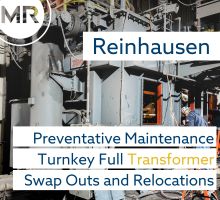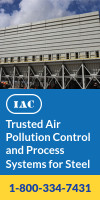NLMK Revamps Hot Rolling Facilities at Lipetsk
11/15/2011 - NLMK has started hot testing and produced the first slab at its reconstructed Reheating Furnace No. 3 in Lipetsk.
NLMK has started hot testing and produced the first slab at its reconstructed Reheating Furnace No. 3 in Lipetsk.
As part of the reconstruction project, furnace capacity has been increased 23% to 320 tonnes per hour. The revamped furnace will allow a 35% reduction in specific fuel consumption, decreased metal loss, lower air emissions, and stabilized rolling.
Reheating Furnace No. 3 is the third new type facility at NLMK’s Hot Rolling Operations in Lipetsk. Previously, the company had revamped and commissioned its Reheating Furnace No. 5 in 2004, and its Reheating Furnace No. 4 in 2007. All furnaces have been designed to ensure uniform and energy-efficient heating of slabs resulting in highly precise control of strip parameters during rolling. The technological capabilities of these units enable them to process both carbon and transformer (grain-oriented) steel slabs.
The project forms part of the company’s action plan for the reconstruction of Hot Strip Mill 2000 equipment with a view to expanding hot-rolled steel annual production at NLMK’s Lipetsk site to 5.7 million tonnes of high quality steel by improving the productivity of existing equipment.
This project, worth approximately RUR1.9 billion, was implemented jointly with CMI (Belgium) as part of Stage II of NLMK’s Technical Upgrade Program.
Reheating Furnace No. 3 is the third new type facility at NLMK’s Hot Rolling Operations in Lipetsk. Previously, the company had revamped and commissioned its Reheating Furnace No. 5 in 2004, and its Reheating Furnace No. 4 in 2007. All furnaces have been designed to ensure uniform and energy-efficient heating of slabs resulting in highly precise control of strip parameters during rolling. The technological capabilities of these units enable them to process both carbon and transformer (grain-oriented) steel slabs.
The project forms part of the company’s action plan for the reconstruction of Hot Strip Mill 2000 equipment with a view to expanding hot-rolled steel annual production at NLMK’s Lipetsk site to 5.7 million tonnes of high quality steel by improving the productivity of existing equipment.
This project, worth approximately RUR1.9 billion, was implemented jointly with CMI (Belgium) as part of Stage II of NLMK’s Technical Upgrade Program.
With more than 12.6 million tonnes of steelmaking capacity, NLMK is a leading international steel company and one of the world's foremost suppliers of slabs and transformer steel as well as a comprehensive range of flat and long steel products. In 2010, the company reported revenues of USD8.35 billion and the production of 11.5 million tonnes of steel.
Key consumers of NLMK’s hot-rolled steel in coils and sheets include construction, shipbuilding, and automotive companies, as well as pipe manufacturers. The company uses its hot-rolled steel to produce cold-rolled, galvanized and pre-painted products, as well as for the production of electrical steels at its Lipetsk and Yekaterinburg sites.



.jpg?lang=en-US&ext=.jpg)
.gif?width=220&height=200&mediaprotectionhash=374c6b9a31f2b2fbfc7937391034efb46fd57feba997b9ad2ae9a0bd3d48329d&ext=.gif)

.gif?width=100&height=200&mediaprotectionhash=e2d5b15d68f84f22038524be6c58e5268d67b7f44494b544e29a8d53c5b959ba&ext=.gif)


